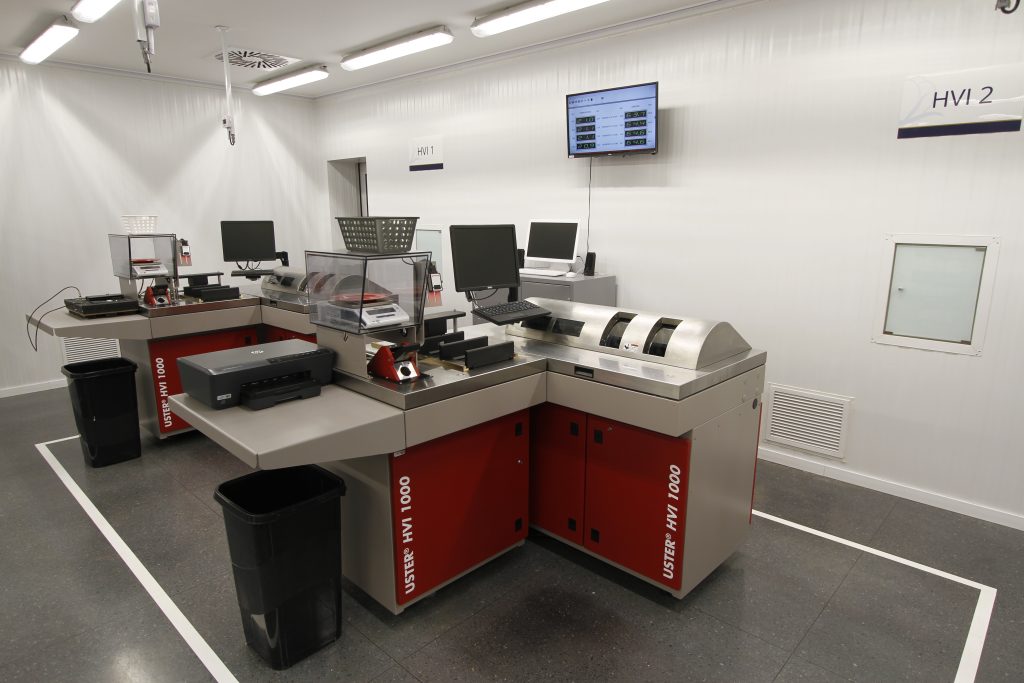Understand the Cotton Quality Parameters Analyzed by HVI
Brazilian cotton |
Important data such as micronaire, short fiber index, color, and other characteristics are meticulously analyzed and included in our quality reports. Learn what these parameters are and what they mean for buyers of Brazilian cotton.
The global textile industry increasingly demands high-quality raw materials that meet diverse and constantly changing needs. For this reason, over the past decades, Brazilian cotton has invested in advanced quality technology, ensuring that the fiber is the best choice for our importing countries.
100% of Brazilian cotton is analyzed using High Volume Instrument (HVI) technology in 12 laboratories, ensuring transparency in fiber data and alignment with CBRA (Brazilian Reference Center for Cotton Analysis), the central laboratory responsible for process calibration.
In total, eight quality parameters are analyzed in Brazilian cotton. Discover what each parameter means and why it is important:

Micronaire
Micronaire measures the combination of fineness and maturity of cotton fiber. It is determined by the airflow resistance through a compressed cotton sample. Very low Micronaire values indicate fine or immature fibers, while very high values may indicate coarse or mature fibers. The ideal Micronaire value is crucial to ensuring high-quality cotton processing and textile manufacturing.
Strength
Strength refers to the force required to break a cotton fiber. This characteristic is essential, as stronger fibers produce more durable and robust yarns, enhancing the quality of the manufactured fabrics. Strength is typically measured in grams per tex (g/tex), where tex is a unit of fiber fineness.
Fiber Length
Fiber length measures the average length of the cotton fibers in a sample. Longer fibers are preferred because they produce stronger and smoother yarn, resulting in higher-quality fabrics. This length can vary significantly depending on the cotton variety and growing conditions.

Fiber Uniformity
Fiber uniformity refers to the consistency of fiber lengths in a cotton sample. High uniformity indicates that most fibers have similar lengths, facilitating processing and resulting in superior quality yarns and fabrics. Low uniformity can cause issues during spinning, leading to irregular yarn thickness.
Short Fibers
Short fibers are significantly shorter than the average fiber length in a sample. An excessive presence of short fibers can negatively impact the spinning process and the quality of the yarn produced, leading to fabrics with higher pilling tendency and reduced durability.
Reflectance Grade
Reflectance grade measures the amount of light reflected by the cotton surface, usually expressed as a percentage. This metric is related to the cotton’s color and brightness. A higher reflectance grade indicates whiter cotton, often preferred for high-quality fabrics because it dyes more easily and evenly.

Yellowness Grade
Yellowness grade indicates the intensity of the yellow tone present in cotton. Cotton with a high yellowness grade is less desirable because the yellow hue can interfere with dyeing and the final product’s aesthetic appeal. Yellowness can result from environmental factors, storage conditions, or the fiber’s natural aging.
Color Grade CG
Color Grade CG combines the reflectance grade and yellowness grade to provide an overall assessment of the cotton’s color. This grading system helps standardize color evaluations, facilitating cotton trade based on visual attributes. Cotton color directly impacts its market value and application in the textile industry.
These characteristics are essential for determining cotton quality and its suitability for various textile applications. Detailed analysis of these parameters helps producers and buyers ensure that the cotton meets specific quality and performance requirements.
